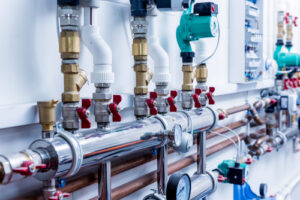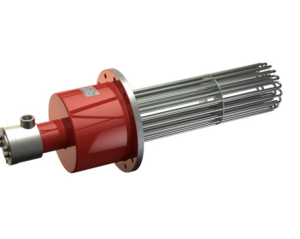Applications and Ideal Heaters for Process Heating
Last updated on September 5th, 2023 at 07:06 pm
Process heating, the heating and transferring of gases and liquids for industrial processes, encompasses various applications for specific purposes. This method looks similar regardless of industry, but some applications require specific heaters and system configurations. Therefore, knowing what devices are available for process heating is vital and how to choose the right units is vital.
Process heating applications
 The use of process heating is almost universal—most modern manufacturers rely on it in some fashion for their applications. Of course, process applications go beyond the manufacturing world.
The use of process heating is almost universal—most modern manufacturers rely on it in some fashion for their applications. Of course, process applications go beyond the manufacturing world.
Industrial applications that rely on process heating
- Molten salts
- Reactor heating and cooling
- Freeze protection
- Glycol boiling
- Paint/coating drying
- Nitrogen and thermal fluid heating
- Paper products
- Heating of process gas, fuel gas, and natural gas
- Shipbuilding
Process heating is a staple method for these industries because of its advantages over heating methods. For example, it provides faster heating speeds, higher thermal efficiency, and reduced maintenance costs.
Process heating efficiency 101
Like all forms of heating, the key factor for successful process heating is efficiency. The ultimate goal is to reduce heat loss. The more heat a process heating system retains, the more efficient it will be. The opposite is true, too. Inefficient process heating systems waste substantial amounts of heat. Additionally, inefficient process heating systems require larger heat outputs, which increases heating costs.
How to maximize process heating efficiency
- Maximize fluid flow rate—The heating system must facilitate conditions that allow your target fluid to flow at its required rate. This helps prevent issues with heat distribution and thermal stability.
- Consider process temperature requirements—Higher temperatures require a higher power output, which can affect wattages and operating costs. This requires upfront calculation, which, once established, allows you to choose the most cost-effective heating configurations.
- Consider thermal properties of target fluid—The physical and thermal properties of fluid will determine the temperature and pressure a system needs to produce. This will likely affect factors, such as the type of heating element, sheath materials, and power output needed for your heating system.
- Factor in the heating system’s “footprint”—“Footprint,” in this context, refers to the amount of space a process heating system takes. Whether working in a smaller or larger area, the heating units must make sufficient use of the space.
Ideal heaters and heating systems for process heating
Applications that rely on process heating are unique in that they depend mainly on two types of heaters—immersion heaters and circulation heaters, each having its advantages and disadvantages. Some process heating applications can use both within a single system.
Immersion heaters for process heating
 Via their tubular electric elements, immersion heaters are submerged into the fluid (or gas) they deliver heat to, providing a direct stream of heat. The sheath elements in these heaters often contain corrosion-resistant material that can withstand high temperatures.
Via their tubular electric elements, immersion heaters are submerged into the fluid (or gas) they deliver heat to, providing a direct stream of heat. The sheath elements in these heaters often contain corrosion-resistant material that can withstand high temperatures.
A benefit of immersion heaters for process heating is that almost all the energy they produce is used to heat their target fluid, which is the mark of great energy efficiency.
Here at Wattco, we produce a wide range of pre-built and customized immersion heaters which can service your process heating application. Components, such as watt density, sheath material, and dimensions, are customizable upon request, and we adjust them to suit the needs of your application.
Circulation heaters for process heating
Circulation heaters are often placed in a tube or pipe which delivers heat to gases or liquids that pass through it. The heater and tube are part of an enclosed loop that circulates the fluid. Circulation heaters typically need to be adjusted or fully customized for the application at hand. However, their nature makes them more versatile than immersion heaters.
Here at Watto, we produce customized circulation heaters for your process heating needs. We’ll consider your target fluid, its required temperature, and your heating system’s ideal orientation and placement.
Maximizing process heaters even further
Choosing the right device(s), whether it’s an immersion heater or a circulation heater, is just one aspect of maximizing process heating. It’s also important to maintain and customize your heating system appropriately. For example, that may mean insulating process heating components to prevent heat loss, which is the biggest cause of poor efficiency. Also, choosing the right material handling equipment is essential because it can also influence heat losses, either positively or negatively.
We customize immersion and circulation heaters to fit various process systems to ensure there’s minimal heat loss and power consumption. Whether you’re in the oil and gas or the packaging sector, you can rely on our heating solutions to meet your application’s demands.
Get a quote for your process heater today. Our representatives will help you find the exact setup needed for your industrial needs.
